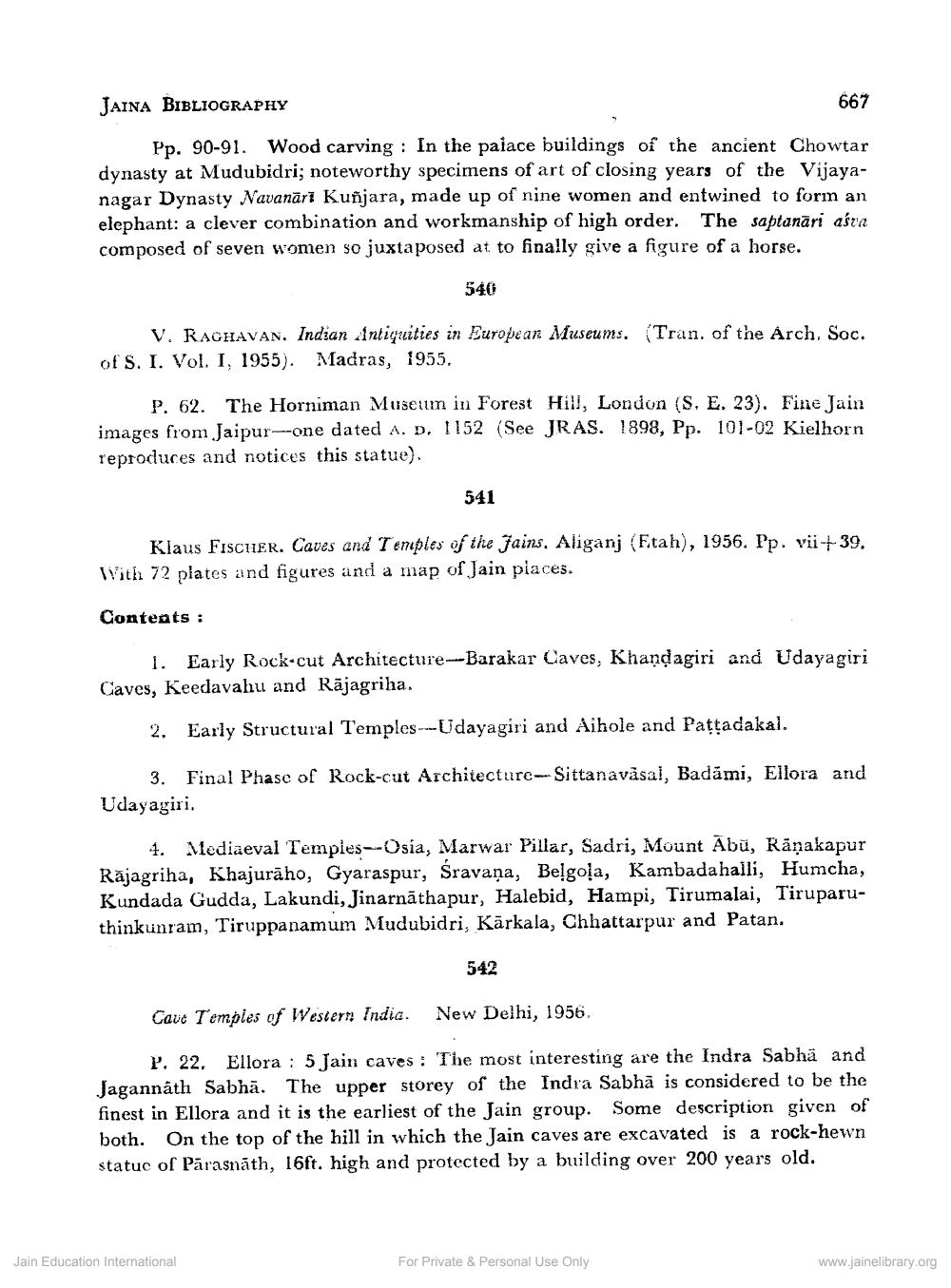________________
JAINA BIBLIOGRAPHY
667
Pp. 90-91. Wood carving : In the paiace buildings of the ancient Chowtar dynasty at Mudubidri; noteworthy specimens of art of closing years of the Vijayanagar Dynasty Navanāri Kuñjara, made up of nine women and entwined to form an elephant: a clever combination and workmanship of high order. The saptanāri asra composed of seven women so juxtaposed at to finally give a figure of a horse.
540
V. RAGHAVAN. Indian Intiquities in European Museums. (Tran. of the Arch. Soc. of S. I. Vol. I, 1955). Madras, 1955,
P. 62. The Horniman Museum in Forest Hill, London (S. E. 23). Fine Jain images from Jaipur-one dated A. D. 1152 (See JRAS. 1898, Pp. 101-02 Kielhorn reproduces and notices this statue),
541
Klaus FISCHER. Caves and Temples of the Jains. Aliganj (Ftah), 1956. Pp. vii +39. With 72 plates and figures and a map of Jain places.
Contents :
1. Early Rock-cut Architecture--Barakar Caves, Khandagiri and Udayagiri Caves, Keedavahu and Rājagriha.
2, Early Structural Temples ----Udayagiri and Aihole and Pattadakal.
3. Final Phase of Rock-cut Architecture-Sittanavåsal, Badāmi, Ellora and Udayagiri.
4. Vediaeval Temples--Osia, Marwar Pillar, Sadri, Mount Abu, Ränakapur Rājagriha, Khajurāho, Gyaraspur, Sravaņa, Belgoļa, Kambadahalli, Humcha, Kundada Gudda, Lakundi, Jinarnāthapur, Halebid, Hampi, Tirumalai, Tiruparuthinkunram, Tiruppanamum Mudubidri, Kārkala, Chhattarpur and Patan.
542
Cave Temples of Western India.
New Delhi, 1956,
P. 22. Ellora : 5 Jain caves : The most interesting are the Indra Sabhä and Jagannath Sabhā. The upper storey of the Indra Sabhā is considered to be the finest in Ellora and it is the earliest of the Jain group. Some description given of both. On the top of the hill in which the Jain caves are excavated is a rock-hewn statue of Pārasnāth, 16ft. high and protected by a building over 200 years old.
Jain Education International
For Private & Personal Use Only
www.jainelibrary.org




